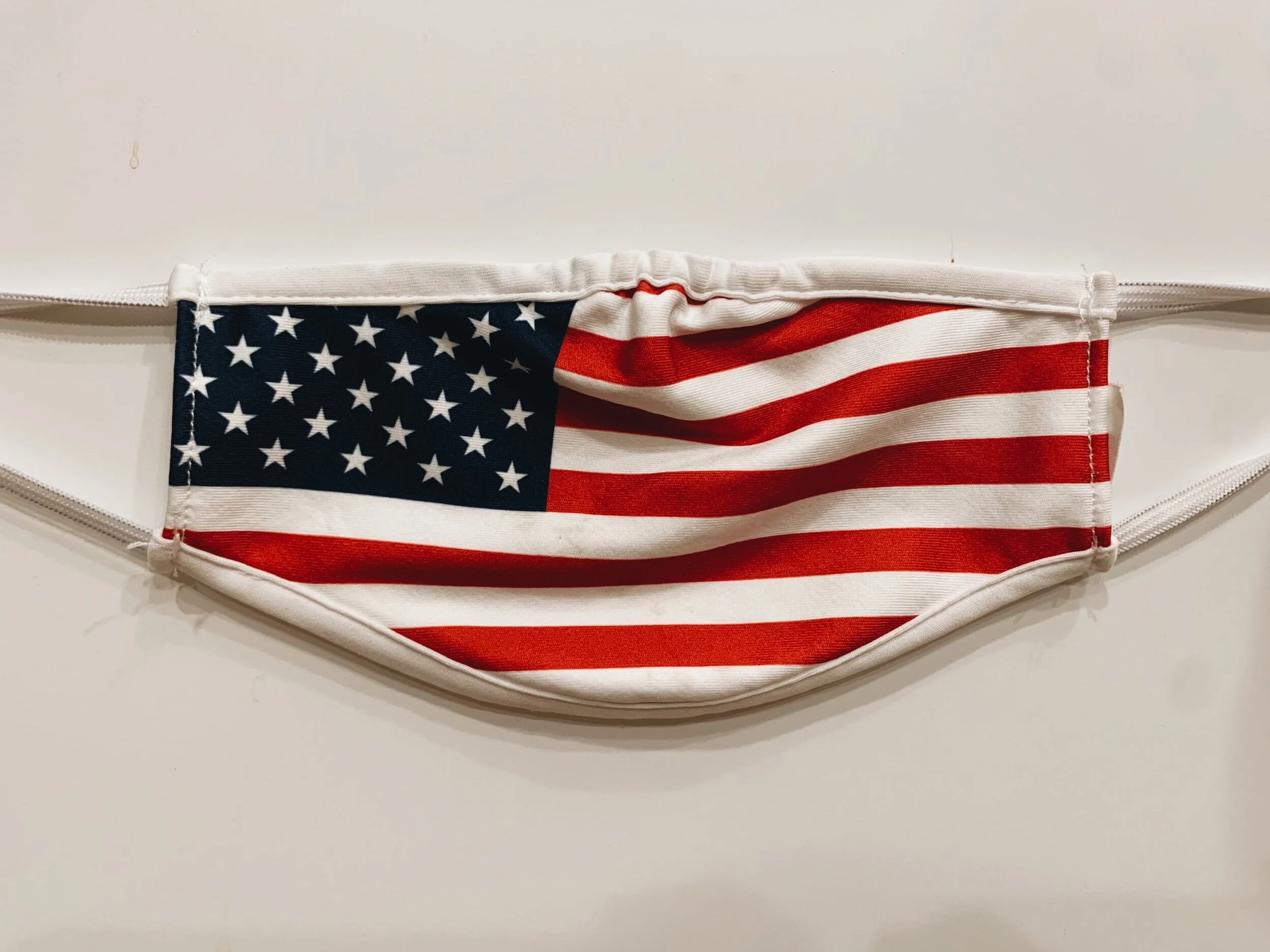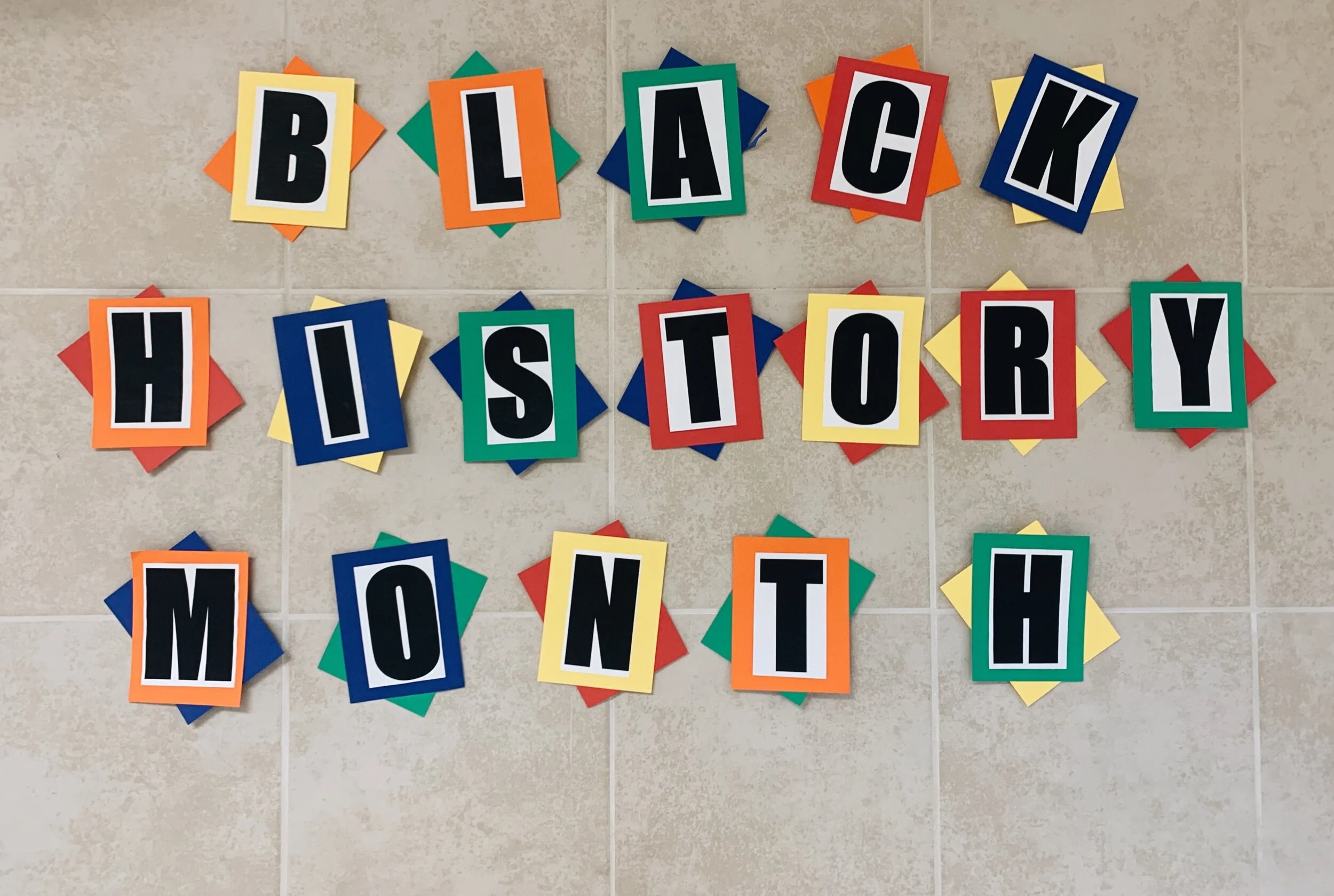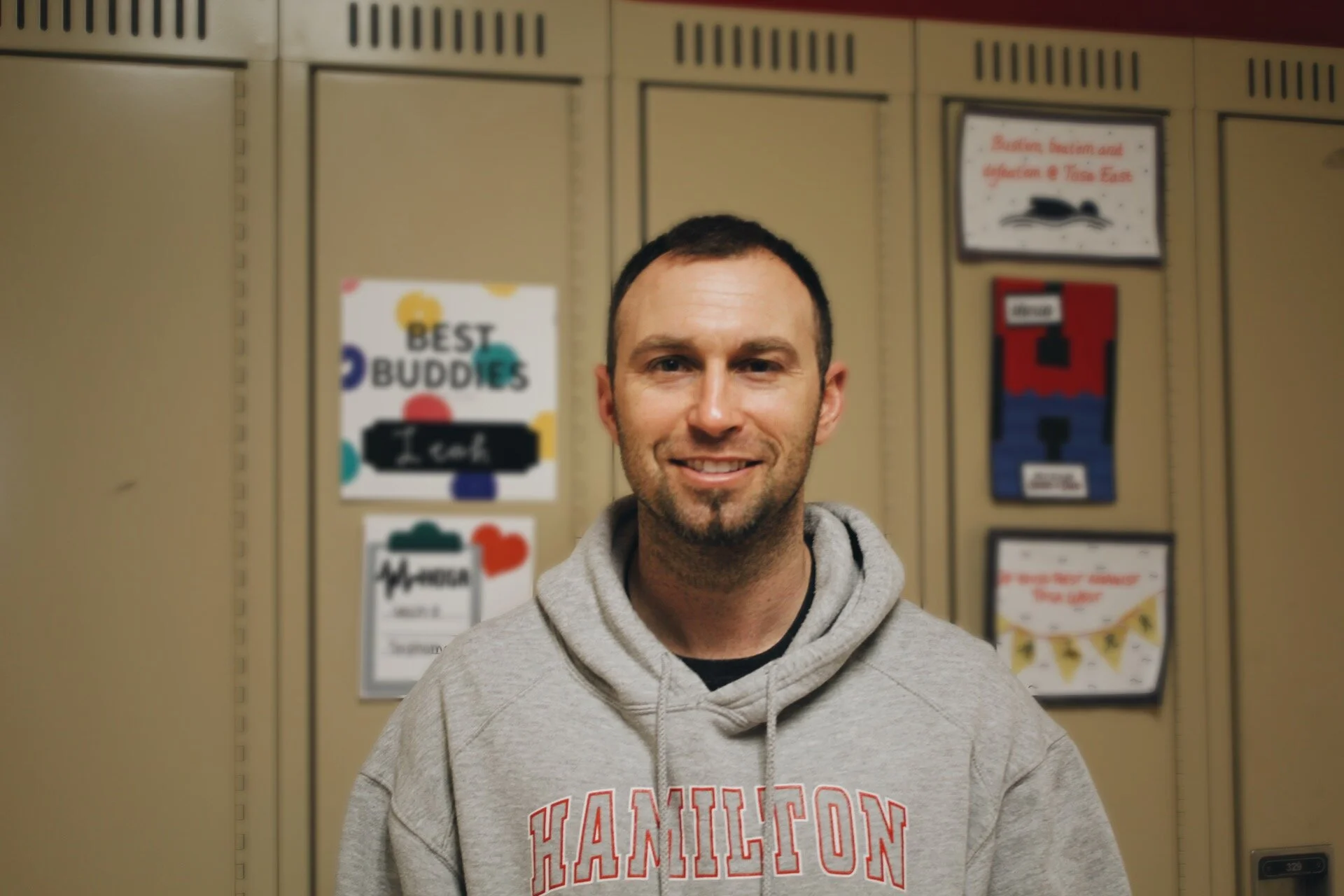How Wearing a Mask Protects Freedoms
Photo by Cora Kuhlenbeck
Emma Hartman
It’s been nearly a year of coronavirus and lockdown in America, and people still can’t agree on the personal responsibility regarding the spread of COVID-19.
Throughout the pandemic, many people have only been considering themselves and their freedoms. They proudly refuse to wear masks, continue traveling, and ignore suggestions to stay socially distant. In short, they have refused to give up their “rights” and demand that their “freedoms” remain protected. But they probably haven’t realized that by doing so, they are actually creating extreme restrictions on basic rights and freedoms for humans all around the world.
To preface, wearing masks has a direct link to fewer COVID-19 cases. “[The Institute for Health Metrics and Evaluation] say we could save nearly 130,000 lives if 95 percent of the U.S. population wore a mask… Even if only 85 percent wore a mask, nearly 96,000 deaths could be prevented” (Source 1).
However, not everybody agrees that masks should be worn. Many refuse to wear them, even though an estimated 130,000 people could be saved. Behavior like this has led to a much longer spread of coronavirus, affecting millions. And because of this, there have been devastating, long-lasting impacts on people around the world— impacts on education, the poor, women, and minorities— that are extremely unequal.
Impact on Education
The effects of COVID-19 on children’s education show significant inequity and restricted freedom. The Declaration of Independence, which is quoted often by those who claim it is their right to not wear masks, states in Article 26 that all children have the right to education. However, citizens who refuse to wear masks are failing to recognize their responsibility in protecting this right. This responsibility goes beyond just the duty of a US citizen— it is a responsibility as a human being. Their decision has a significant impact on children both in and outside of our country— and they are ignoring this impact. Sadly, the access to education worldwide has been extremely limited due to the pandemic. These limits are creating long-lasting inequalities. A staggering 24 million children are predicted to drop out of school and never return because of the pandemic, and about a third of children around the world did not have access to virtual learning when schools first closed (Source 2).
“To keep the world’s children learning, countries have been implementing remote education programmes. Yet many of the world’s children – particularly those in poorer households – do not have internet access, personal computers, TVs or even radio at home, amplifying the effects of existing learning inequalities. Students lacking access to the technologies needed for home-based learning have limited means to continue their education. As a result, many face the risk of never returning to school, undoing years of progress made in education around the world” (Source 3). Having access to technology is a privilege that often goes unrecognized. Children around the world are struggling to learn virtually due to limited technology, and many are permanently losing their education.
These educational effects are not just happening in impoverished countries. They are prevalent all across America, too. A school principal in Los Angeles said, “For many of our undocumented families, their citizen children became the breadwinners, and the burden of survival fell on their shoulders. We have several that decided not to return this year because they need to continue to work” (Source 4). Many students are missing out on their education because the stresses of the pandemic left their families struggling financially. While education is a basic right that all children deserve access to, many teenagers had no choice but to give it up to support their families.
Additionally, schools around America are spending significant amounts of money, especially the already poorer schools in high-poverty areas. The many costs of providing virtual education have been an extreme financial burden on many schools, however, “the problem is less acute in wealthier suburbs, where schools generally rely more on property taxes for revenue and less on state aid per student” (Source 4).
All Milwaukee Public Schools are fully virtual this year, and the impacts are profound. “One of the major challenges MPS faces is digital connection— 82% of its students are economically disadvantaged and there's a massive push to get every student a device and reliable Wi-Fi. MPS plans to spend about $22.7 million on 65,000 Chromebooks and 19,500 wireless internet hotspots, according to budget figures in its reopening plan” (Source 5). MPS serves a high percentage of families who are struggling economically. As a result, these schools spend large amounts of money to support their students. During the pandemic, they must spend even more money to ensure that all of their students have access to technology. However, wealthier suburban schools are not facing nearly as much of a financial burden as poorer city school districts such as MPS, even though they have more funding and resources. This is because a high percentage of their students already have the technology and support to be able to do virtual school. As a result, the gap between wealthier schools and poorer schools is widening due to COVID.
Access to equal education and quality learning are basic rights that should be accessible to all children throughout the world.
The longer the pandemic lasts, the more disparities will arise between wealthy and poor schools throughout the world. In other words, the longer people only fight to protect their personal rights by not wearing a mask, the more they take away from each child’s education.
Wearing a mask can protect children’s rights to an equal chance to learn and succeed. By doing all that we can to help stop the spread of the virus, we are also helping to secure the freedom of a safe and fair education for all children— this is the type of freedom we should all be thinking about protecting.
Impact on the Poor
A loss of education has impacts beyond just academics. “...closures hamper the provision of essential services to children and communities, including access to school meals, the ability of many parents to work, and increased risk of violence against women and girls. These risks will be exacerbated by the economic impact of the pandemic” (Source 6). Many children throughout the world rely on schools as safe places where they not only have access to education but also to food and protection. As a result, not being able to go to school is creating dangerous situations for many children. “School closures put kids at higher risk for physical and emotional violence, mental health issues, child labor, sexual abuse, and lifelong poverty” (Source 2).
Throughout the world, people who were previously struggling financially have suffered from more severe impacts due to COVID-19 than those who were not. Wealth has been found to be a helpful resource to many people when it comes to protecting themselves from the virus. Studies show that “two of the largest risk factors for dying from COVID-19 are being from a deprived background and being from a minority-ethnic background, pointing to the underlying role of social inequalities, housing conditions and occupation” (Source 7). While wealthier people tend to have more protection, such as homes outside of cities or vacation houses to escape to, poorer people are much more limited. Many people are confined in small, crowded housing, putting them at a higher risk (Source 7).
The freedom of equal access to healthcare and safety is being severely restricted, yet people are still arguing that their freedoms should be considered first. Many children around the world are losing the protection that school provides them, and most poor people don’t have access to the same resources as wealthy people to keep themselves safe.
These inequalities will only continue to grow worse as the pandemic continues. The longer people don’t wear masks and keep spreading the virus, the more they take away from children and people in need.
Wearing a mask can keep children safe and protect the well-being of the poor. It can give all people an equal chance to be secure and healthy-— this is the type of freedom we should all be thinking about protecting.
Impact on Women
Women are also experiencing unequal effects of the coronavirus. Many women are leaving the workforce to take care of children or domestic responsibilities. “This is partly due to the disproportionate burden that COVID-19 has placed on women who are juggling responsibilities with reduced family support networks, but also a result of furlough and job losses in female-dominated sectors such as hospitality, travel, events and the arts” (Source 8). In fact, 1 in 4 women in the US are considering either downsizing or completely leaving their roles in the workforce, and 865,000 American women left the workforce just during August and September (Source 8).
What’s more, research shows that women in the UK are twice as likely as men to lose their job due to COVID. This is creating a significant gender workforce gap that will damage progress in gender equality and take years to reverse (Source 8). Additionally, the pandemic is causing more violence against refugee and displaced women and girls, which is leading to “alarming reports of sharp increases in the risks of gender-based violence, including intimate partner violence, trafficking, sexual exploitation, and child marriages” (Source 9). The gender gap in the workforce is widening, and violence against women around the world is increasing due to the pandemic.
Additionally, school closures are creating a devastating impact on girls around the world. “The coronavirus has already damaged kids' well-being, with about 11 million girls projected never to return, putting them at risk for early pregnancy, abuse, and marriage” (Source 2). The protection and education provided by being in school give girls living in poverty both a childhood and a hopeful future because it keeps them safe from harm or early marriage. However, many girls are losing this safety. Girls are also much more likely to be held responsible for taking care of their family and home, which makes learning at home very difficult. This widens educational gender gaps and puts worldwide women’s progress at risk (Source 2).
Women around the world are losing their role in the workforce. Many are at a higher risk of violence and abuse, and millions of girls don’t have the same access to education and protection as they previously had.
The longer people refuse to wear masks, the more they take away from years of women’s progress and rights, along with the safety of girls around the world.
Wearing a mask can ensure that women are treated with fairness. All women should have the freedom and basic right to equal opportunities and safety— this is the type of freedom we should all be thinking about protecting.
Impact on Minorities
Minorities have also been suffering from the unequal, freedom-restricting impacts of coronavirus. Researchers have found that minorities in America are not only more likely to contract Coronavirus but are also more likely to die from it. “Latino and African-American residents of the United States have been three times as likely to become infected as their white neighbors… And Black and Latino people have been nearly twice as likely to die from the virus as white people, the data shows” (Source 10). Minorities are at a higher risk of being exposed because that they are more likely to “have front-line jobs that keep them from working at home; rely on public transportation; or live in cramped apartments or multigenerational homes” (Source 10). In Missouri, 40% of people infected are Black or Latino citizens, even though these groups only make up 16% of Missouri’s population (Source 10). Factors beyond pre-existing health conditions are causing extremely disproportionate and unequal effects. “Systemic racism doesn’t just evidence itself in the criminal justice system… It’s something that we’re seeing taking lives in not just urban America, but rural America, and all types of parts where, frankly, people deserve an equal opportunity to live— to get health care, to get testing, to get tracing” (Source 10).
Article 2 of the Declaration states that every American has freedom from discrimination, and Article 3 states that all people have the right to personal security. So, having equal access to safety and health is a basic freedom that every person deserves. However, not all people are receiving these rights.
The longer people refuse to wear masks, the longer many people’s rights will be constricted and safety will be limited.
Wearing a mask can protect minorities who are currently at an unfair disadvantage. All people deserve to have equal access to health and well-being— this is the type of freedom we should all be thinking about protecting.
Throughout the pandemic, many people have been prioritizing their freedoms above others’, and the impacts are extremely unequal.
Not following the rules for limiting the spread of coronavirus is creating restrictions on freedom and equality throughout all of society that are much more long-lasting and devastating than being asked to wear a mask in public spaces. Childrens’ rights to education, safety, and quality learning, the poor’s right to health, women’s rights to equal representation and safety, and minorities’ right to equality are all at risk because many people consider their “right” to not wear a mask as above all of these.
We all need to ask ourselves what types of freedoms should be prioritized during these trying times. And I hope that if we all work together and do our parts— even by doing something as simple as putting on a mask— we can ensure that each and every person truly has the right to life, liberty, and the pursuit of happiness.
Sources:
Source 3: https://data.unicef.org/topic/education/covid-19/
Source 5: https://www.cbsnews.com/news/milwaukee-schools-coronavirus-virtual-learning/
Source 8: https://www.thedrum.com/opinion/2020/11/24/covid-s-unexpected-impact-women-the-workplace
Source 9: https://www.cnn.com/2020/11/26/world/covid-gender-quality-un-scli-intl/index.html






